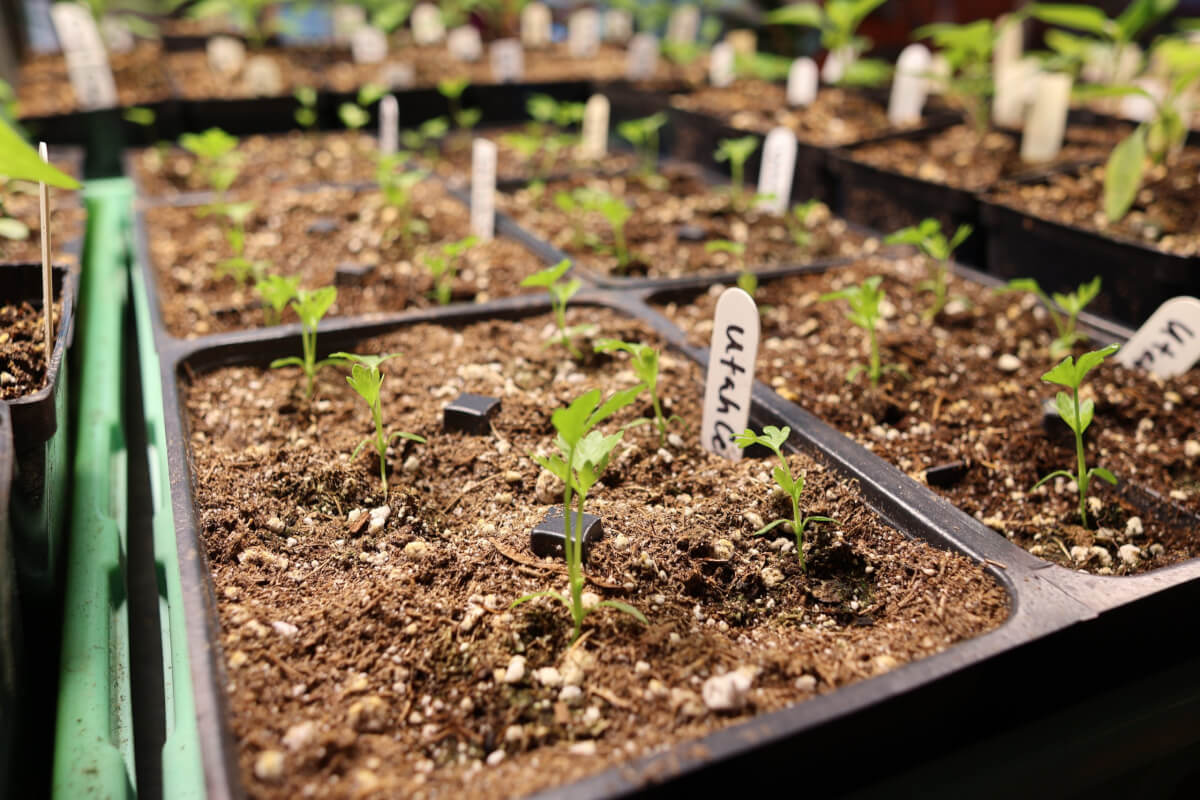OK, so if you started any of those seeds many weeks ago, chances are good that you’re nearing the point where you need to start fertilizing your seedlings. (Others of you may need this advice in a few weeks.) But, this tends to be one of the topics that causes a lot of hesitation, especially with newer growers, so we’ll just lay it out there.
The gist is that a seed only has so much internal energy. We discussed the cotyledon earlier this season, and that’s basically what that initial seed energy is designed to create. Beyond that growth stage, plants need light (for photosynthesis) and nutrients (for food) to continue growing. That food is what you know as fertilizer, compost, NPK, or nitrogen, potassium and phosphorus. (There’s other nutrients too, but we’re going to keep this one super basic.)
You probably have a reasonable understanding of compost and maybe even soil nutrition, that this provides nutrition to plants. But, the “how” it does that might be a bit mysterious to you. And indeed, the biochemical process of how that happens is very much mysterious and very, very nerdy. The gist is that your plant doesn’t have little teeth on its roots, going about its day chomping down that compost. Rather, assimilation, interconversion or enzymatic processes are used to “convert” NPK into “more available” (think “edible”) forms of NPK like nitrate, ammonium, orthophosphate and potassium oxide. Our young seedlings are not particularly “great” at this conversion process (yet), plus they have limited root structure by which to make it happen.
This is why, in our opinion, we think it’s wise to supplement our young seedling’s growth with fertilizer. We’re looking for a particular trait in that fert, though, and it’s that the NPK is immediately available to the plant. (i.e. It’s all ready nitrate, ammonium, orthophosphate or potassium oxide.) So, that means we’d generally prefer water soluble fertilizers in this application versus granular fertilizers that (similar to compost) have to first break down to become something your plant can actually eat. Short story? Water soluble fertilizers put immediately available NPK into the soil, which your plant can then immediately start to absorb and use, regardless of its size and capabilities.
So, with that established, lets get into dosage for seedlings. Some ferts might have a “seedling dosage” and if it does, we recommend following that. Many don’t, though. So, a good guideline to follow is about 1/8 to 1/4 of a “normal” dose. So, for example, if it “normally” calls for 1 teaspoon per gallon, you’d use 1/8 or 1/4 teaspoon per gallon for seedlings. In the earliest stages of growth, less is good. In later stages of growth, the 1/4 dose is likely adequate. Once you’re familiar with your fert, you may also decide that immediately going to 1/4 dose will work just fine. (Which is what we do, since we know our fert to be relatively gentle.)
We generally start fertilizing about a week or two after we’ve transplanted from the seeding tray into its transplant destination. In plant growth terms, this is “roughly” between when first and second true leaves start to develop. We follow the fertilizer manufacturers schedule, which for most water soluble ferts is usually between every 7 and 14 days.
You might argue that plants are designed to use compost and basic soil nutrition, so fertilizer isn’t necessary. And you wouldn’t be wrong. But, using it will get you more robust garden starts than relying on the natural process alone. We’d also argue that its difficult to predict if your soil has “enough” NPK to get from seedling to mature garden transplant.
Hopefully that breaks down this somewhat mysterious “guarded secret” and gives you an actionable plan for fertilizing your seedlings!


